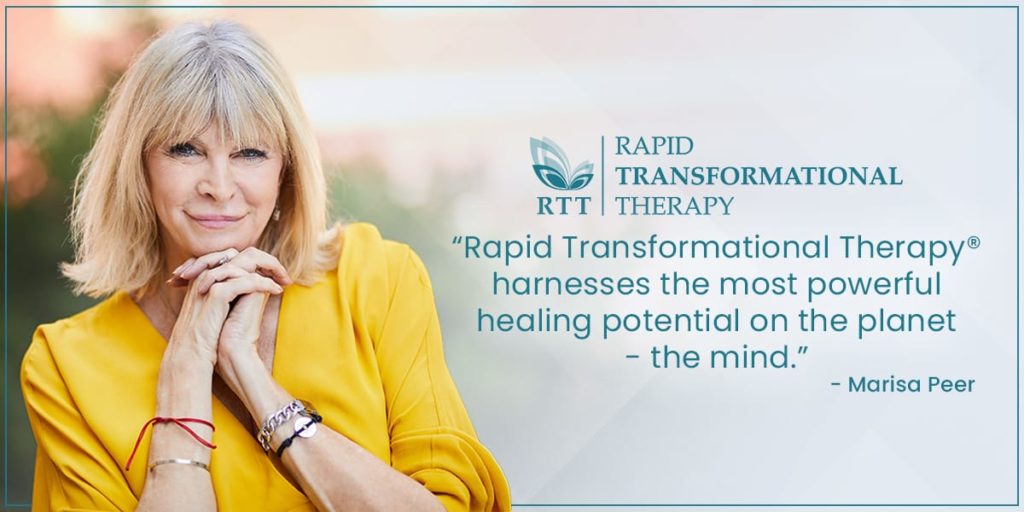Maybe you are new to the coaching industry. Or perhaps you have been a life coach for a few months or years already. However, you have never exactly nailed down your pricing. You either feel like you are charging too much or even too little.
The question, “how much should I charge for coaching?”, has crossed your mind more than a few times. Luckily, this article outlines exactly how to determine how much you should be charging for your coaching services, as well as how to develop and price coaching bundles and packages.
In this article you will find out:
- Hourly-based vs value-based pricing
- One-on-one vs group coaching pricing
- How to come up with and charge for bundles and packages
- How to creating customer loyalty programs
Let’s take a closer look!
How do you price coaching services?
The average life coach salary has a huge range. Depending on your skills, experience, quality of marketing efforts, and previous success record, you could make anywhere from about $27 000 to $210,000 per year. This can result in a ton of confusion about how you should price your services, especially when you are first starting out.
Furthermore, many individuals experience imposter syndrome when they are first starting a business. Imposter syndrome refers to feelings of inadequacy and self-doubt, despite possibly obvious success. So, let us cast your doubt aside. You are worthy and you deserve sufficient payment for your outstanding coaching services.
So, how to answer the question “how much should I charge for coaching” exactly?
Hourly-Based vs Value-Based Pricing

Many coaches charge based on an hourly rate. New coaches typically start at $50-$75 per session. Meanwhile, experienced coaches may charge $100-$200 per session. Then there are package deals that may come in at $1200-$2400 per bundle (but more on this later).
Generally, the more niched down your coaching services are, the more you can charge. You become an expert in solving a specific set of problems that is relevant to a specific group of people. This means you are very valuable – way more so than any other coach-generalist.
How do you price coaching services based on value?
There is a debate over whether or not you charge per hour or by the value you offer each client. Charging by the hour may work well for less experienced and newer coaches. Yet, once you have the experience under your belt, you may want to move toward charging for the value you are providing.
For example, Keith Webb, a reputable coach and business leader in the United States, recommends charging according to your client’s results, the difficulty of what you are coaching your clients on, and the expertise you are able to provide. This pricing approach moves away from the hourly rate and emphasizes the results you get for your clients.
As you gain experience in the industry, such as 5 or 10 years down the line, you can re-evaluate your pricing. Or you may be able to increase your pricing as you gain more training. For example, if you are a business coach who recently graduated business school or who has many courses and certifications, you may be able to charge more and charge a set price for your services – effectively moving away from your hourly rate.
Or perhaps you have been getting previous clients undeniably incredible results. After this happens more than a few times, you can likely increase your pricing. You have proof and real testimonials attributing to your amazing skills and coaching capabilities.

One-on-One vs Group Coaching Pricing
The great part about group coaching is that you can coach multiple individuals in one go. This means that you can individually price this option lower. In turn, this can be a worthwhile option for people who want to receive your services but cannot afford the expense of individual coaching or for people that want to try you out.
Group coaching can provide potential clients with an introduction to your coaching capabilities. Consequently, this can act as a gateway to one-on-one coaching sessions. After group coaching, they may be ready for more in-depth individual work.
But how do you price group coaching?
For pricing, many coaches use the general rule that group coaching should cost each individual 30% of one-on-one coaching rates. This means that if you charge $500 per month for one-on-one coaching, you would charge about $150 for each person in your coaching group. Ideally, you would then want at least four people in each group coaching session.
How To Come Up With Coaching Packages and Bundles

Coaching packages and bundles are excellent for offering a variety of price points, allowing you to really narrow in on your ideal client, and help you shed the hourly pricing mindset.
Many coaches develop packages starting with their ‘signature program’. Ideally, this is the method or technique you use most often and that you find the most effective.
When creating any coaching package, consider the following:
- How much time do your clients have to commit to?
- How much time do you have to commit to? (Will it be one-on-one coaching, masterminds, group coaching, or workshops?)
- What is your step-by-step process? Or what do your clients need to do to get the results they want?
- What are the materials you and your clients will need? (e.g. PDFs, workbooks, templates, scripts.)
- What resources will you supply your clients with? (This refers to what comes with the package or bundle, such as tutorials, book lists, podcasts, blog posts, recorded presentations, and more.)
- Will you offer bonuses? (This could mean audio or video training or ebooks.)
Once you answer the questions above, you are ready to finalize your packages.
Using the DSP Framework for Bundles and Packages
DSP Framework helps you come up with a step-by-step process to help your clients get closer to their desired outcome.
DSP stands for Desire – Solution – Package. This means that your clients often come to you with a set problem. For example, they are struggling to make their marriage work, or perhaps they cannot seem to get new clients in their own business. Generally, the problem is something you want to help your clients overcome.
Then, there is the desire. The desire is what your clients truly want, or more specifically, what is behind the problem they have. Do they want money, a loving relationship, or more financial freedom?
The outcome, then, helps them get closer to their desired outcome.
Usually, you may have to work some coaching hours before determining your package or bundle. For instance, when your package is based on results, you will need to work with clients to achieve those results first. After you tested the process a few times you can determine how many sessions are necessary to get similar results for new clients. Once you figure that out, you are ready to work on a pricing strategy.
Charging for coaching packages & bundles

The best way to price bundles & packages is to determine how much you want to make per year. Then decide how many hours, days, and weeks you want to work out of the year.
For example, you want to make $80,000 this year. You want to have a month off and work 4-hour days, 4 days a week for the other 11 months (48 weeks). To determine an hourly rate for this, take your total number of desired revenue and divide it by your hours x days x weeks.
Here’s how to calculate it:
Hourly rate = desired yearly revenue / (work weeks × work days × work hours)
80 000 / (48 × 4 × 4) = 80 000 / 768 = 104.17
This means that to reach your desired revenue this year your hourly rate has to be $104.
But wait, how does this help you price bundles and packages?
Determine how many coaching and preparation hours your package includes and multiply it by your hourly price. For example, it takes 8-10 1-hour sessions to get the results your client desires. With an hourly rate of $104, a 10-hour coaching package will cost $1040.
However, you can also choose to make packages with so many sessions included, such as a monthly package or bundle at $416 with four sessions per month included.
Creating Customer Loyalty Programs

You have written out your packages and bundles and figured out your pricing. Now, how can you make your potential or current clients stay with you longer and purchase more programs?
The truth is, it is much easier to make your existing clients buy more products as opposed to acquiring new clients that are not familiar with you or your services. This is why it is a great idea to think about up-selling, cross-selling, and down-selling.
Upselling refers to when a customer purchases a higher-priced service or product after buying related items. For example, someone may purchase group coaching and then buy the more expensive one-on-one package.
When it comes to upselling, you want to ensure the upsell is relevant to that particular client. Considering they are an existing client, you may want to consider throwing in a free session or a discounted rate for the first few sessions. In addition, using urgency, without being too pushy, can help the right client move up into a higher-priced category. Using the right language and setting is key to this.
Cross-selling means selling an additional related product to an existing customer. For instance, maybe you have already done one-on-one sessions with this customer; why not cross-sell them on a package deal?
Down-selling is a way to offer more budget-friendly alternatives to potential clients. This means offering your group coaching to those who may be less likely to afford one-on-one coaching.
All in all, this may mean you want to have a customer loyalty program. This means offering discounted rates or perks for existing clients. In turn, this can help move them up a price-point.
You could also create a referral program. This means that your clients can share a special link or code with a friend who may also benefit from your services and who would get a free session or a discounted deal with their first-time purchase. This way you can give your clients the initiative to spread the word about your services through their social groups, and get more clients for your coaching business.
Know Your Worth
When asking yourself ‘how much should I charge for coaching’, know your worth when it comes to pricing your coaching services. Many individuals tend to underprice themselves, so do not be afraid to feel a little uncomfortable with your set price or new pricing. You want to ensure you are getting paid enough for what you offer, as well as receiving enough that you are willing to put in the work to help each and every client to the best of your ability.
Need more Guidance for Your Coaching Services?
If you are looking for more guidance on how to become an exceptional coach that transforms people and build a successful coaching business, consider looking into the Rapid Transformational Therapy® training program. Rapid Transformational Therapy® (RTT®), is an alternative modality that can help diversify your existing coaching business or provide another option for your career path.
What Exactly is RTT®?

RTT® stands for Rapid Transformational Therapy, and it embraces the most powerful aspects of hypnotherapy, hypnosis, Neuro-Linguistic Programming (NLP), and Cognitive Behavioral Therapy (CBT). Marisa Peer, founder of RTT®, published author and celebrity therapist, developed this method based on over 3 decades of experience working with superstars, CEOs, and Olympic athletes all over the world. The RTT® program is designed to help you build your own RTT® and coaching practice, providing you with not only additional tools to work with clients but also marketing and business training.
Who is Rapid Transformational Therapy® for?
RTT® is for anybody who can prove a passion for therapy or life coaching, who display an unshakeable desire to help others. RTT® not only sets you up with world-renowned skills to become a successful RTT Therapist, but joining the 6000 people who have already trained under Marisa Peer, means you get to access materials that teach you how to successfully run a busy business that can offer you the freedom and flexibility to live the life you choose. Access the free RTT® course prospectus today to find out more and take your next step towards a successful coaching business.




